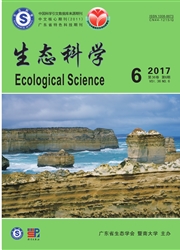

 中文摘要:
中文摘要:
作为优势植物,泥炭藓(Sphagnum)在泥炭沼泽中缺乏有性更新的原因尚不清楚。针对影响孢子萌发的光强和养分条件,以泥炭藓(S.palustre)为材料,通过室内孢子萌发实验,研究不同光强和养分浓度对孢子萌发率、萌发势及萌发指数的影响。4种培养基中,养分浓度高的营养液培养基中孢子萌发率最高,达到60%,其次为养分浓度与营养液相近的琼脂+营养液培养基,萌发率为48%,再次为养分水平很低的沼泽水培养基,萌发率约为30%,几乎无养分的蒸馏水培养基中萌发率最低,约为5%。萌发势和萌发指数亦呈现相同的规律。琼脂+营养液和营养液培养基较沼泽水和蒸馏水培养基孢子萌发时间提前约3天时间。增加光强使孢子萌发率仅提高10%。研究表明,低养分浓度和弱光照均不利于孢子萌发,相对而言,泥炭沼泽的贫营养特征应是限制泥炭藓有性更新的更重要因素。
 英文摘要:
英文摘要:
The mechanism for rare sexual regeneration in Sphagnum palustre, the dominant plant in peatlands is not clear. Aiming at the two factors affecting spore germination, we chose S. palustre as study material and conducted an indoor spore germination experiment to explore the effect of light intensity and nutrient concentration on germination rate (GR), germination vigor and germination index. Among the four culture media, nutrient solution with suitable level of nutrients showed the greatest GR, 60%; agar + nutrient solution with highest level of nutrients showed higher GR, 48%; mire water with much less nutrients showed lower GR, 30%; and distilled water with the least nutrients showed the lowest GR, about 5%. Similar pattern was also observed in germination vigor and germination index. The initial germination time in nutrient solution and agar + nutrient solution was approximate 3 days earlier than that in mire water and distilled water. Enhancing light intensity only increased GR by 10% or so. This study indicates that less nutrient and light are detrimental to spore germination; the oligotrophy in peatlands is the main factor to limit sexual regeneration of Sphagnum.
 同期刊论文项目
同期刊论文项目
 同项目期刊论文
同项目期刊论文
 期刊信息
期刊信息
